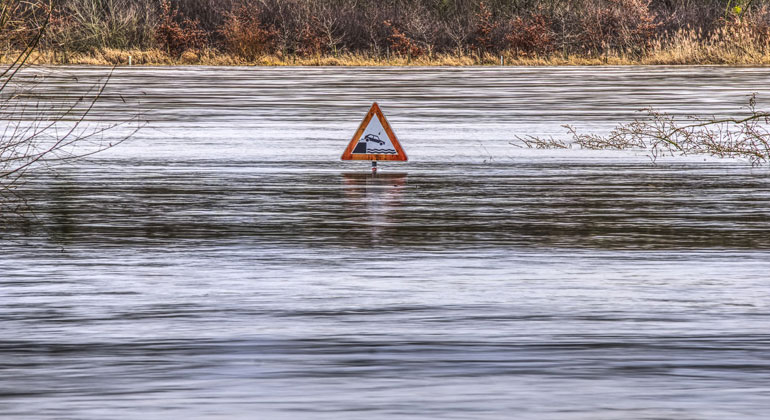Climate Change Affects Floods in Europe
A large international research project led by TU Wien (Vienna) has demonstrated for the first time that climate change has an impact on the magnitude of river floods.
Overflowing rivers can cause enormous damage: Worldwide, the annual damage caused by river floods is estimated at over 100 billion dollars – and it continues to rise. So far it has not been clear how climate change influences the magnitude of river floods. There were no apparent patterns.
Austrian flood expert Prof. Günter Blöschl from TU Wien (Vienna) has led a large international study involving a total of 35 research groups that provides clear evidence that changes in the magnitude of flood events observed in recent decades can be attributed to climate change. However, climate change does not have the same effect on floods everywhere: In northwestern Europe, floods are becoming increasingly severe, in southern and eastern Europe flood magnitudes mostly tend to decrease, although, in small catchments, they may actually increase. The results of the study have now been published in “Nature” magazine.
Climate change is a crucial factor
“We already knew from our previous research that climate change is shifting the timing of floods within a year”, says Günter Blöschl. “But the key question is: Does climate change also control the magnitude of flood events? So far, the available data had not been sufficient to ascertain whether this is the case or not. We have now examined this question in great detail and can say with confidence: Yes, the influence of climate change is clear”.
For the study, data from 3,738 flood measurement stations in Europe from 1960 to 2010 were analysed: “For a long time it has been assumed that climate change is having an impact on the magnitude of flood waters because a warmer atmosphere can store more water,” explains Günter Blöschl. “However, this is not the only effect, things are more complicated.”
In central and north-western Europe, between Iceland and Austria, flood magnitudes are increasing because precipitation is increasing and the soils are becoming wetter. In southern Europe, on the other hand, flood levels are decreasing, as climate change results in declining precipitation and the higher temperatures cause increased evaporation of water in the soil. However, for small rivers, floods may actually increase due to frequent thunderstorms and deforestation. In the more continental climate of Eastern Europe, the magnitudes of floods tend to decrease due to shallower snow packs in winter associated with higher temperatures. “Processes differ across Europe – but the regional patterns all correspond well with predicted climate change impacts,” says Blöschl, “This shows us that we are already in the midst of climate change.”
Significant changes
The magnitude of the changes is remarkable: they range from a decline of 23.1% per decade (relative to the long-term mean) to an increase of 11.4% per decade. If these trends continue into the future, major effects on flood risk can be expected in many regions of Europe.
Günter Blöschl argues for these findings to be included in flood management strategies: “Regardless of the necessary efforts of climate change mitigation, we will see the effects of these changes in the next decades,” says Blöschl. “Flood management must adapt to these new realities.”
Source
Prof. Günter Blöschl
Institute of Hydraulic Engineering and Water Resources Managemen | TU Wien 2019








